Ocean circulation causes the largest freshening event for 120 years in eastern subpolar North Atlantic
- PMID: 31996687
- PMCID: PMC6989661
- DOI: 10.1038/s41467-020-14474-y
Ocean circulation causes the largest freshening event for 120 years in eastern subpolar North Atlantic
Abstract
The Atlantic Ocean overturning circulation is important to the climate system because it carries heat and carbon northward, and from the surface to the deep ocean. The high salinity of the subpolar North Atlantic is a prerequisite for overturning circulation, and strong freshening could herald a slowdown. We show that the eastern subpolar North Atlantic underwent extreme freshening during 2012 to 2016, with a magnitude never seen before in 120 years of measurements. The cause was unusual winter wind patterns driving major changes in ocean circulation, including slowing of the North Atlantic Current and diversion of Arctic freshwater from the western boundary into the eastern basins. We find that wind-driven routing of Arctic-origin freshwater intimately links conditions on the North West Atlantic shelf and slope region with the eastern subpolar basins. This reveals the importance of atmospheric forcing of intra-basin circulation in determining the salinity of the subpolar North Atlantic.
Conflict of interest statement
The authors declare no competing interests.
Figures
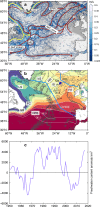
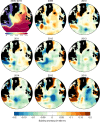
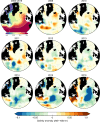

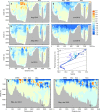
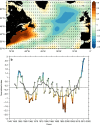
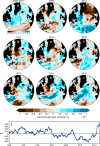

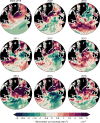

References
-
- Buckley MW, Marshall J. Observations, inferences, and mechanisms of the Atlantic Meridional Overturning Circulation: a review. Rev. Geophysics. 2016;54:5–63. doi: 10.1002/2015RG000493. - DOI
-
- Ferreira D, et al. Atlantic-Pacific asymmetry in deep water formation. Annu. Rev. Earth Planet. Sci., Vol. 46. 2018;46:327–352. doi: 10.1146/annurev-earth-082517-010045. - DOI
-
- Gelderloos R, Straneo F, Katsman CA. Mechanisms behind the temporary shutdown of deep convection in the Labrador Sea: lessons from the Great Salinity Anomaly Years 1968-71. J. Clim. 2012;25:6743–6755. doi: 10.1175/JCLI-D-11-00549.1. - DOI
-
- Böning CW, Behrens E, Biastoch A, Getzlaff K, Bamber JL. Emerging impact of Greenland meltwater on deepwater formation in the North Atlantic Ocean. Nat. Geosci. 2016;9:523–52. doi: 10.1038/ngeo2740. - DOI
Grants and funding
- NE/N018044/1/RCUK | Natural Environment Research Council (NERC)
- NE/K010875/1/RCUK | Natural Environment Research Council (NERC)
- 7278520/EC | Horizon 2020 Framework Programme (EU Framework Programme for Research and Innovation H2020)
- 7278520/EC | Horizon 2020 Framework Programme (EU Framework Programme for Research and Innovation H2020)
- 7278520/EC | Horizon 2020 Framework Programme (EU Framework Programme for Research and Innovation H2020)
LinkOut - more resources
Full Text Sources

